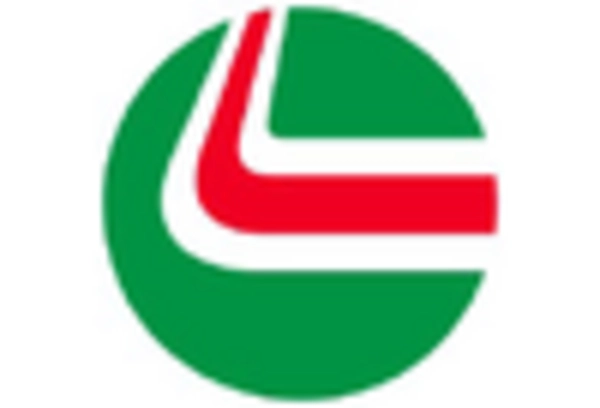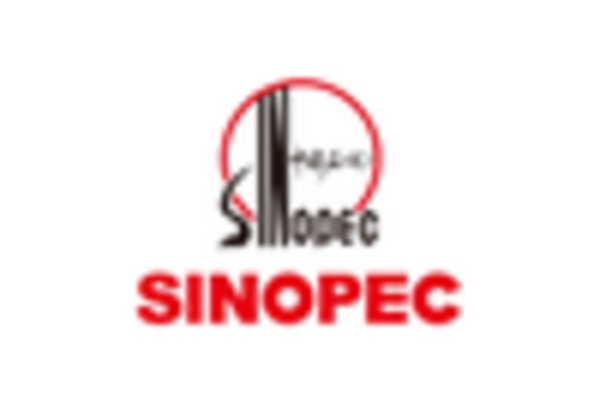Rising Industrialization
The rapid pace of industrialization across the APAC region appears to be a primary driver for the APAC Lubricants Market. As countries like India and Vietnam continue to expand their manufacturing capabilities, the demand for lubricants in various industrial applications is likely to increase. The industrial sector, which includes manufacturing, construction, and mining, is projected to contribute significantly to lubricant consumption. For instance, the industrial lubricants segment is expected to witness a growth rate of approximately 4.5% annually, reflecting the increasing need for efficient machinery operation and maintenance. This trend suggests that the APAC Lubricants Market will benefit from the ongoing industrial growth, as companies seek to enhance productivity and reduce operational costs.
Technological Innovations
Technological innovations in lubricant formulations and applications are significantly influencing the APAC Lubricants Market. The development of synthetic lubricants, which offer superior performance and longer service life, is gaining traction among consumers and industries alike. These advancements are expected to drive the market, as businesses increasingly prioritize efficiency and sustainability. For example, synthetic lubricants can reduce energy consumption by up to 5%, which is appealing in an era where energy efficiency is paramount. Additionally, the integration of smart technologies in lubricant management systems is likely to enhance operational efficiency. Therefore, the ongoing technological advancements are expected to propel the APAC Lubricants Market forward, as companies seek innovative solutions to meet evolving demands.
Expansion of Automotive Sector
The automotive sector's expansion in the APAC region is a crucial driver for the APAC Lubricants Market. With rising disposable incomes and urbanization, vehicle ownership is on the rise, particularly in countries like China and India. The automotive lubricants segment is projected to grow at a compound annual growth rate of around 5% over the next few years. This growth is driven by the increasing demand for high-performance lubricants that enhance engine efficiency and longevity. Furthermore, the shift towards electric vehicles may also influence lubricant formulations, as manufacturers adapt to new technologies. Thus, the automotive sector's evolution is likely to play a pivotal role in shaping the future of the APAC Lubricants Market.
Growth in Renewable Energy Sector
The growth in the renewable energy sector is emerging as a notable driver for the APAC Lubricants Market. As countries in the region invest in renewable energy sources such as wind and solar, the demand for specialized lubricants used in these applications is expected to rise. For example, lubricants used in wind turbine gearboxes require specific properties to withstand extreme conditions, which presents a unique market opportunity. The renewable energy sector is projected to grow at a compound annual growth rate of around 8% in the coming years, indicating a robust demand for tailored lubricant solutions. This trend suggests that the APAC Lubricants Market will increasingly cater to the needs of the renewable energy sector, thereby diversifying its product offerings.
Regulatory Compliance and Environmental Standards
The increasing emphasis on regulatory compliance and environmental standards is shaping the APAC Lubricants Market. Governments across the region are implementing stringent regulations aimed at reducing emissions and promoting sustainable practices. This regulatory landscape is compelling lubricant manufacturers to innovate and develop eco-friendly products. For instance, the demand for biodegradable lubricants is on the rise, as industries seek to comply with environmental regulations. The market for bio-based lubricants is projected to grow at a rate of approximately 6% annually, reflecting the shift towards sustainable alternatives. Consequently, the focus on regulatory compliance is likely to drive the APAC Lubricants Market towards more sustainable practices and products.

















Leave a Comment